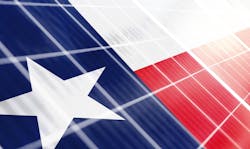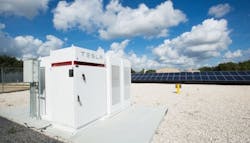Lone Star Resiliency: Texas Voters Approve $10B Energy Fund for Microgrids, Gas-fired Backup Power
The state’s power resiliency goals will be all the more sustainable and attainable because of it.
Texas voters overwhelmingly approved legislation which codifies the future Texas Energy Insurance Fund. The program will set aside $10 billion to ensure the state has ample and flexible power generation supply to avoid disasters such as Electric Reliability Council of Texas suffered during its almost total grid collapse during Winter Storm Uri in February 2021. In the aftermath, Texas political leaders then punished ERCOT by forcing their CEO out and taking other measures.
“The bottom line is, we as a state need dispatchable generation and Texans need surety in their grid,” Texas state Sen. Charles Schwertner, who helped sponsor the original bill, said earlier this year, according to a statement on the state’s legislative website.
More than 100 people died during Uri when close to 52 GW of electricity generation capacity—including gas-fired, coal and wind—was knocked offline due to extended freezing temperatures. Reports indicate that ERCOT’s crisis came within 5 GW of a potential total grid outage due to frequency challenges on the system, which forced the system operator to enact load shedding in numerous customer regions.
Now, to be sure, the passage of Proposition 7 is mainly positive for the natural gas industry in Texas, as the fund will set aside $8 billion or more to build out 10 GW of gas-fired power capacity.
Nonetheless, the $1.8 billion allocated for microgrids—which can include solar, battery storage and gas or diesel gen-sets—is a major boost to distributed energy resource development across Texas, already one of the nation’s highest rated states for microgrid installation. A recent state scorecard by advocacy group Think Microgrid graded Texas at a B, among the four highest marks in a report which chided many states for not embracing the resiliency and sustainability values of microgrids strongly enough.
Travis County, the home of state capital Austin, was the only country to reject Proposition 7.
And while many environmental and renewable energy advocates will decry the gas-fired focus of this legislative backup plan, the move could solidify Texas’ standing as a leading microgrid state. The availability of fast-acting DERs can play a role in solving the utility power crisis and not just in winter—a summer peak demand pushed market prices to $4,000 per MWh in the Lone Star state’s unique deregulated, competitive market.
Out of the 85 GW in total installed electricity capacity in Texas, about one-third of that is wind and solar power. This makes Texas one of the highest U.S. states in terms of clean energy percentage.
Texas is home to more than 200 microgrids statewide. Enchanted Rock, one of the bigger microgrid developers in the industry, is based in Houston.
Track news about industrial microgrids, decarbonization and more. Subscribe to the free Microgrid Knowledge newsletter.









